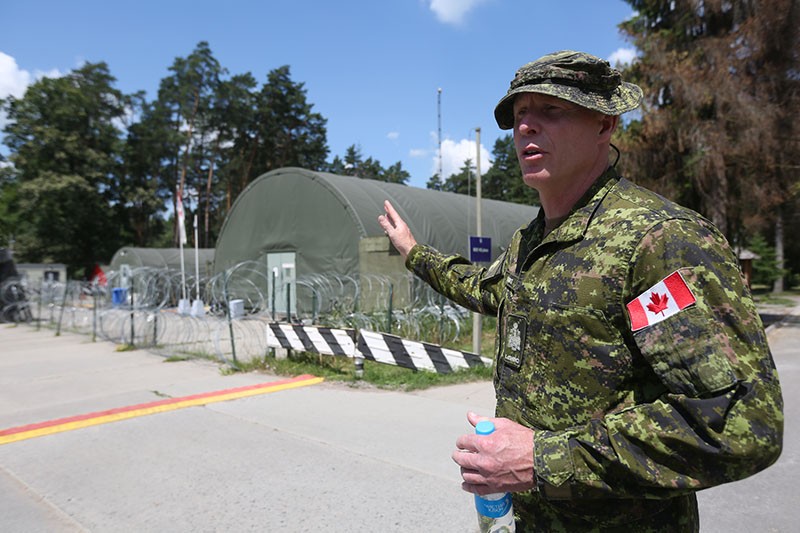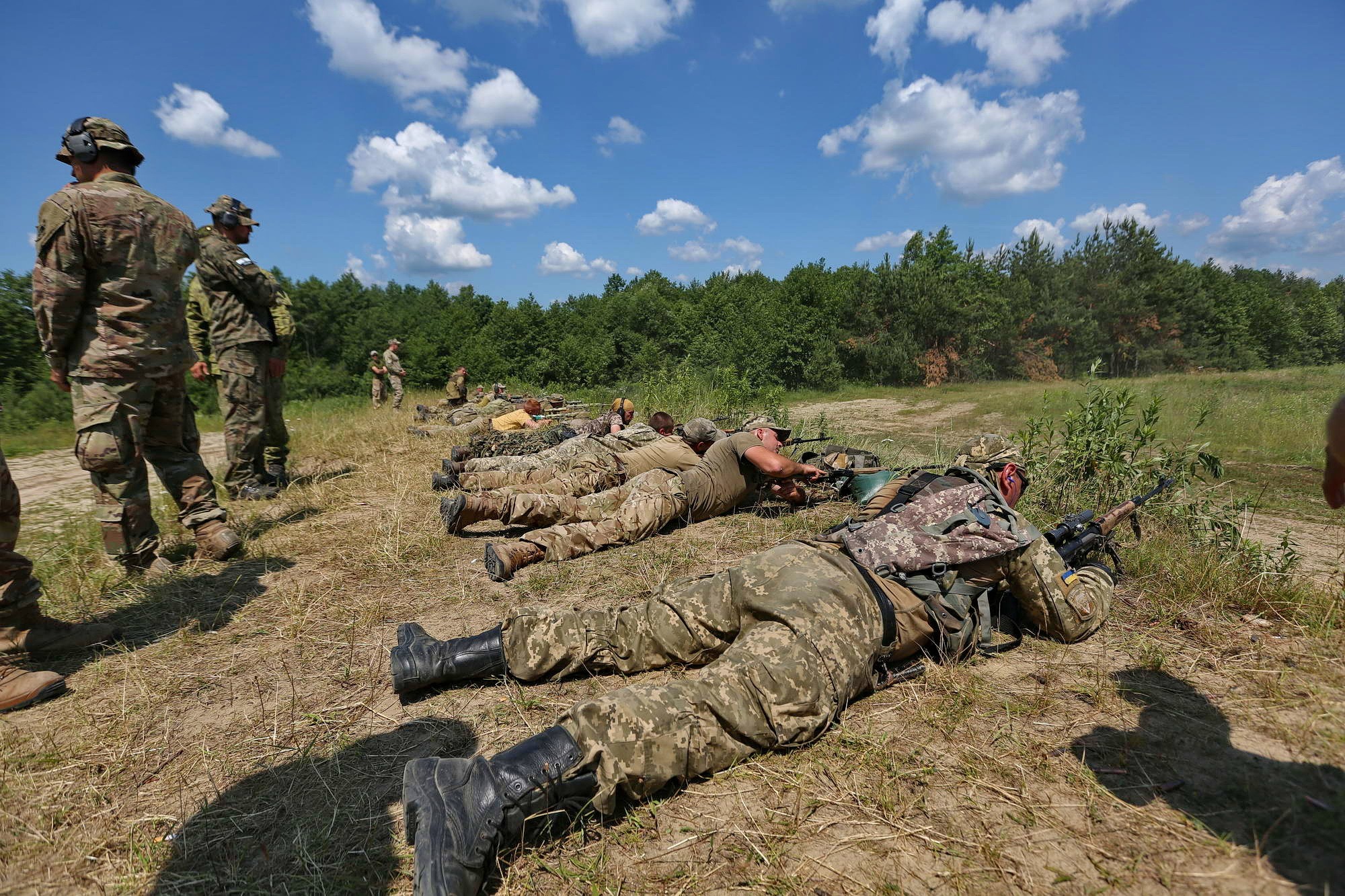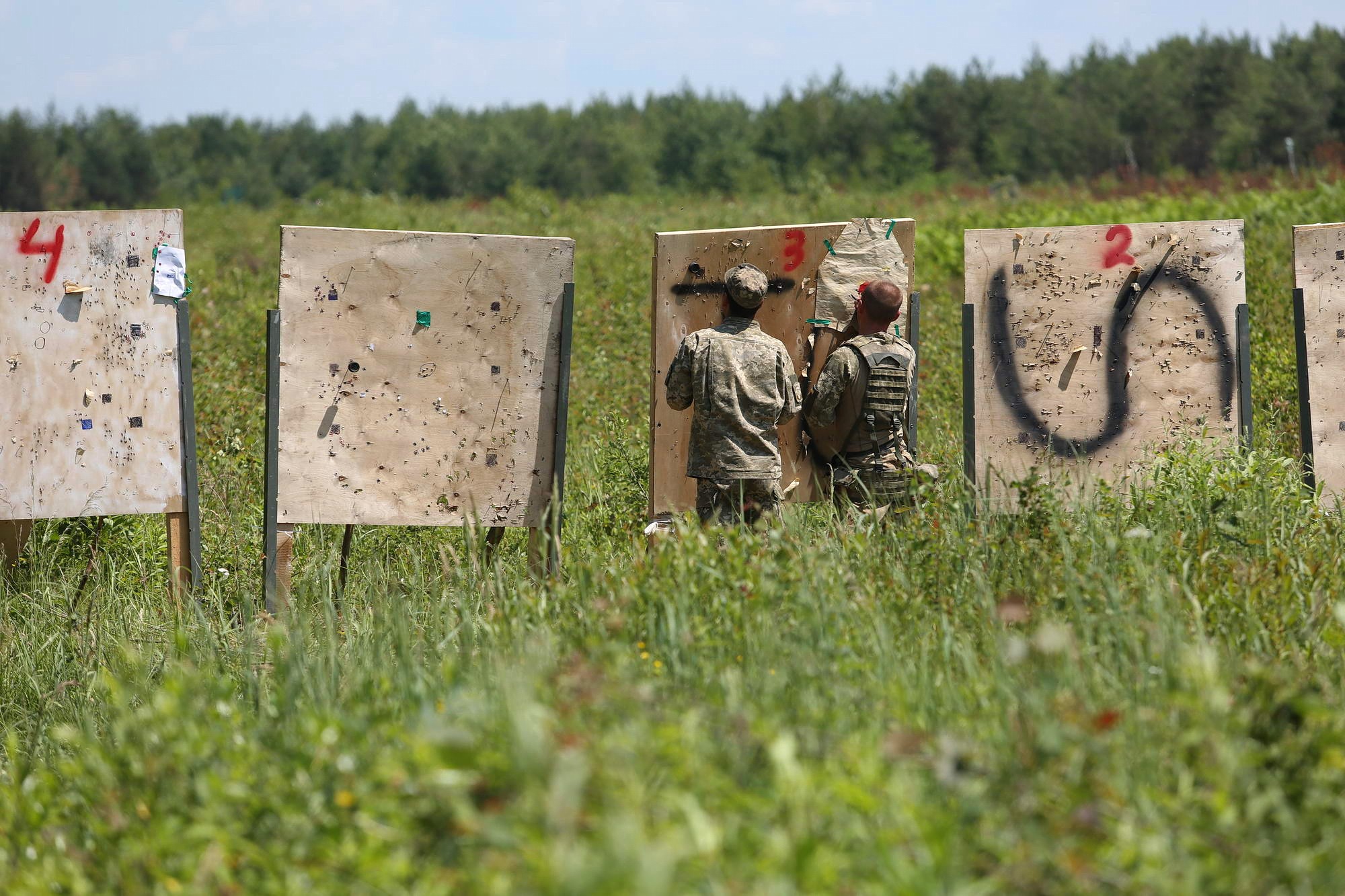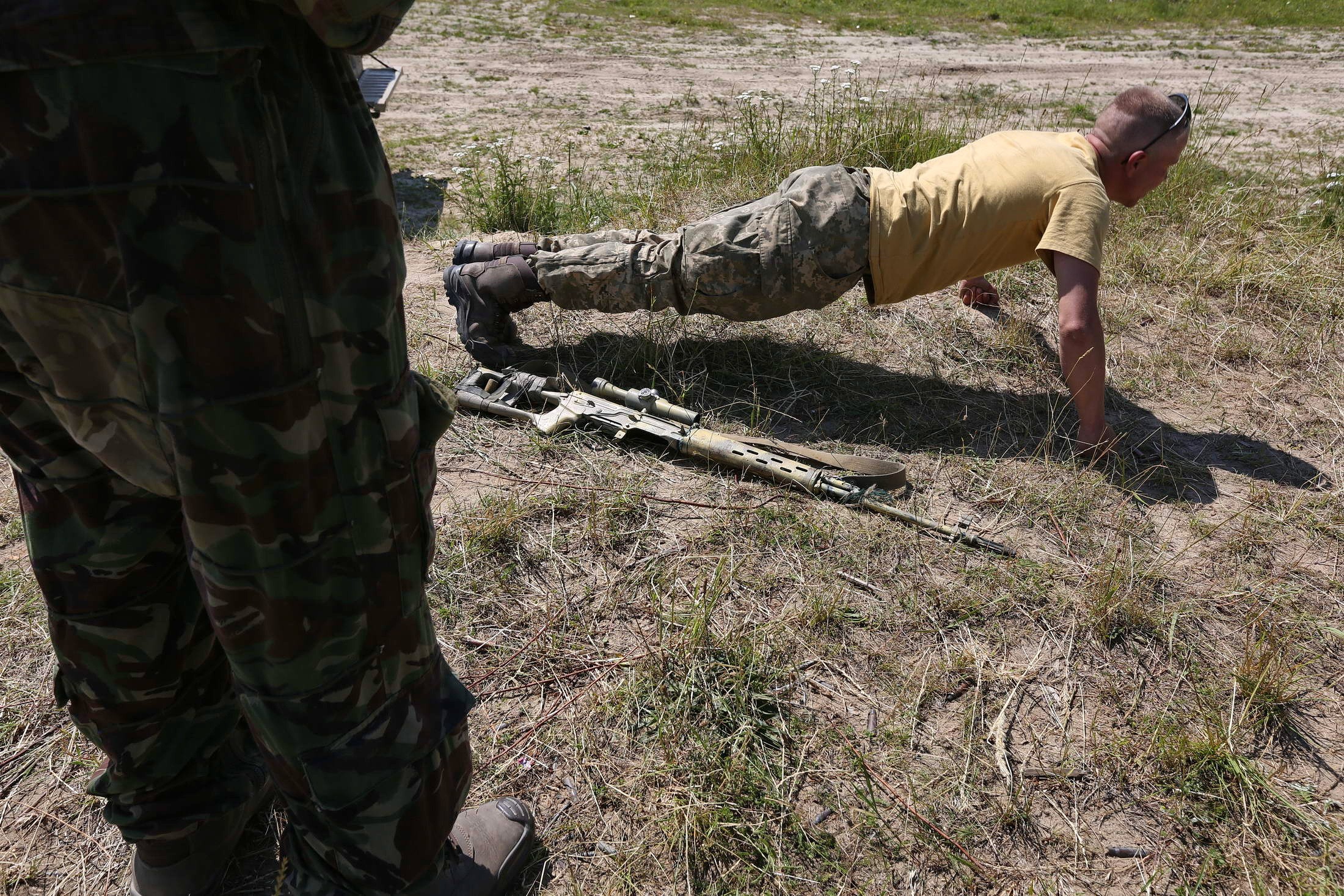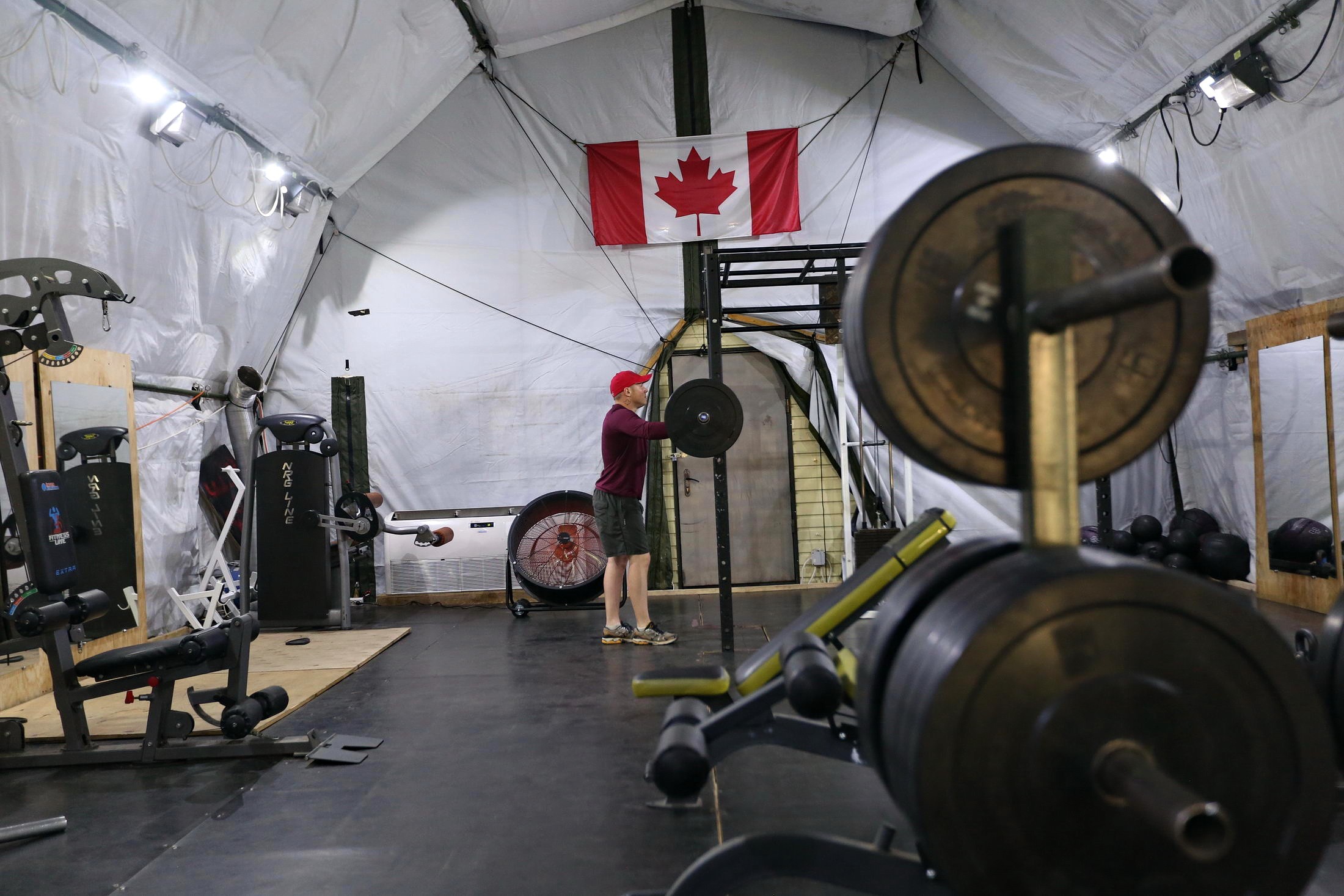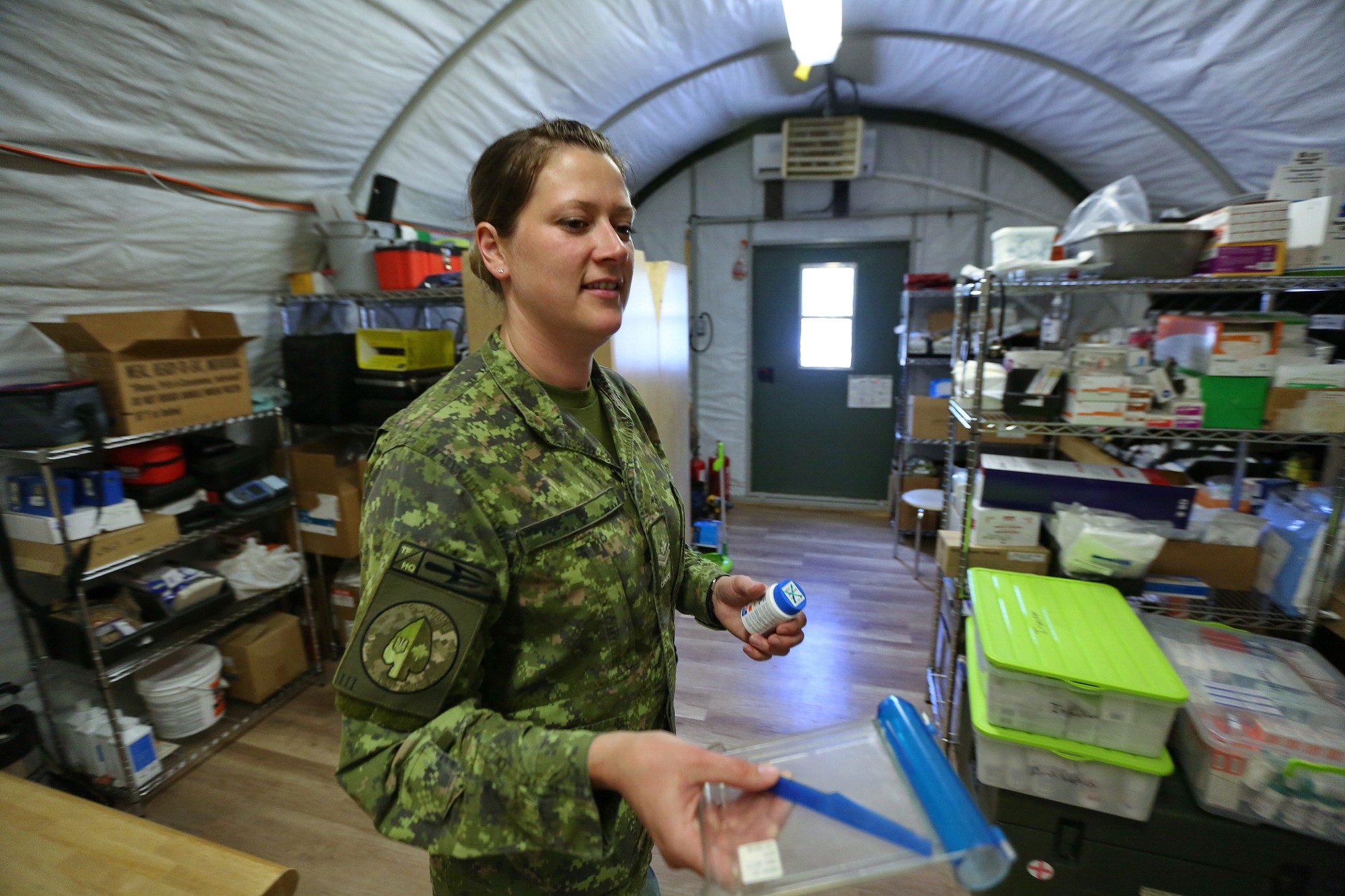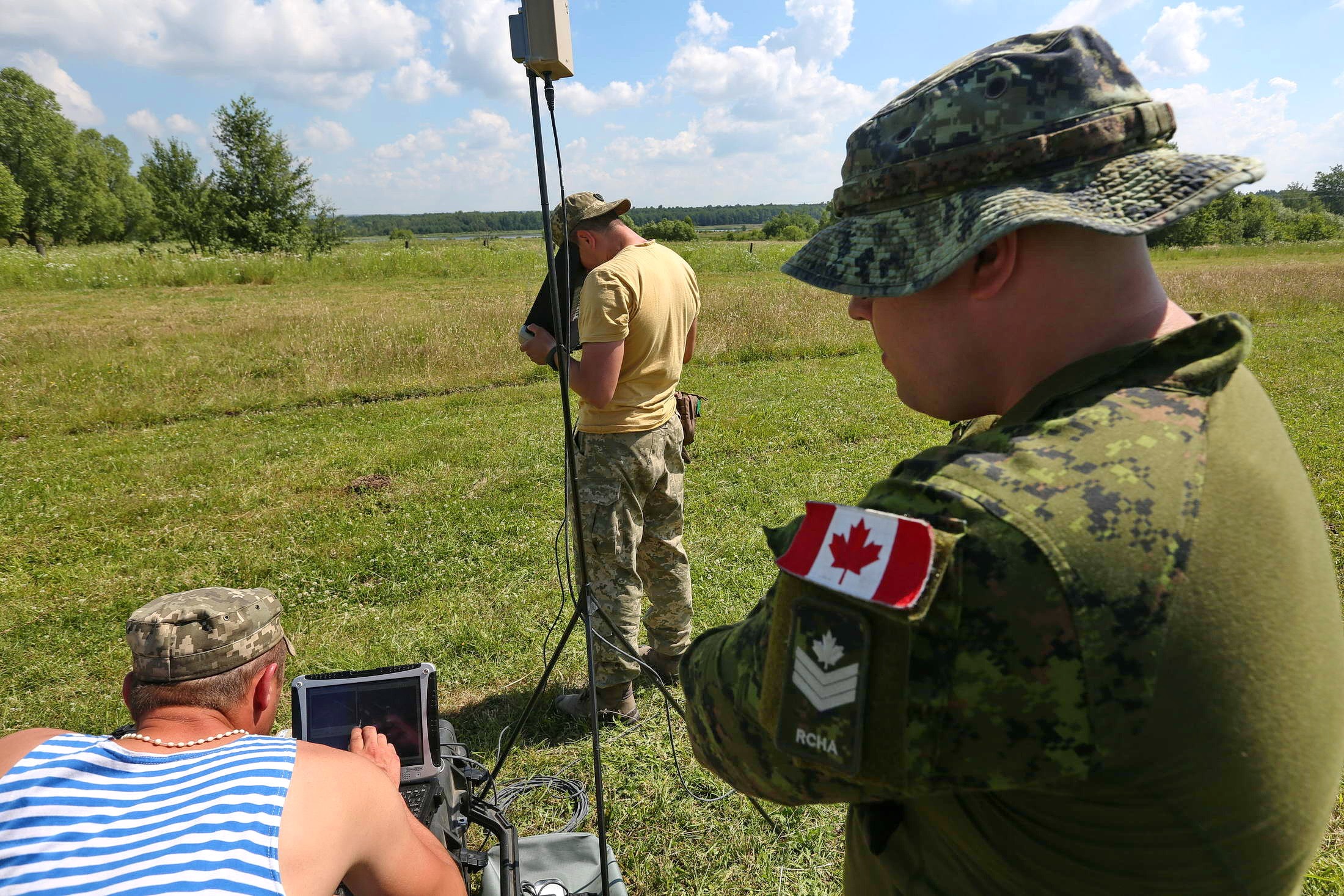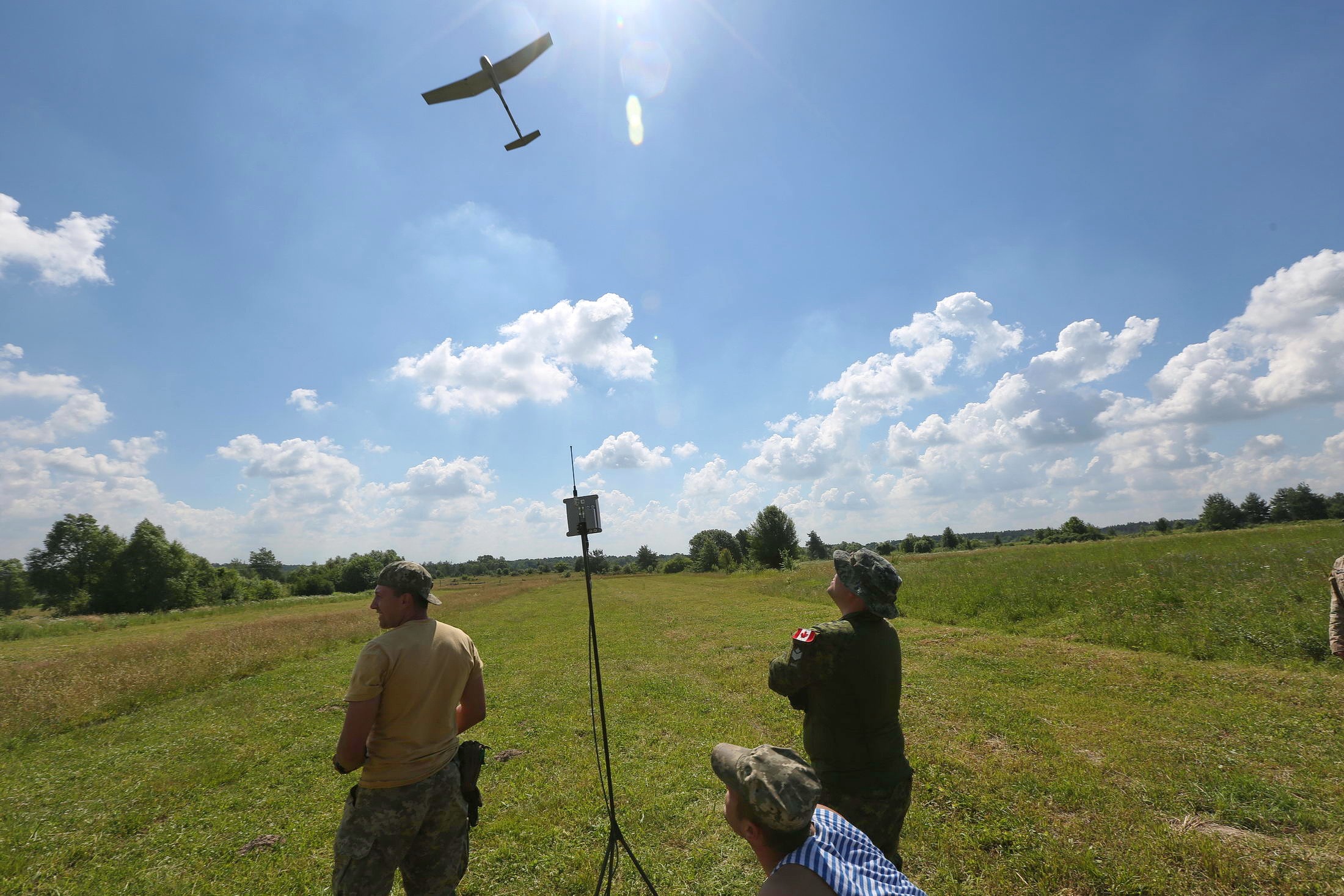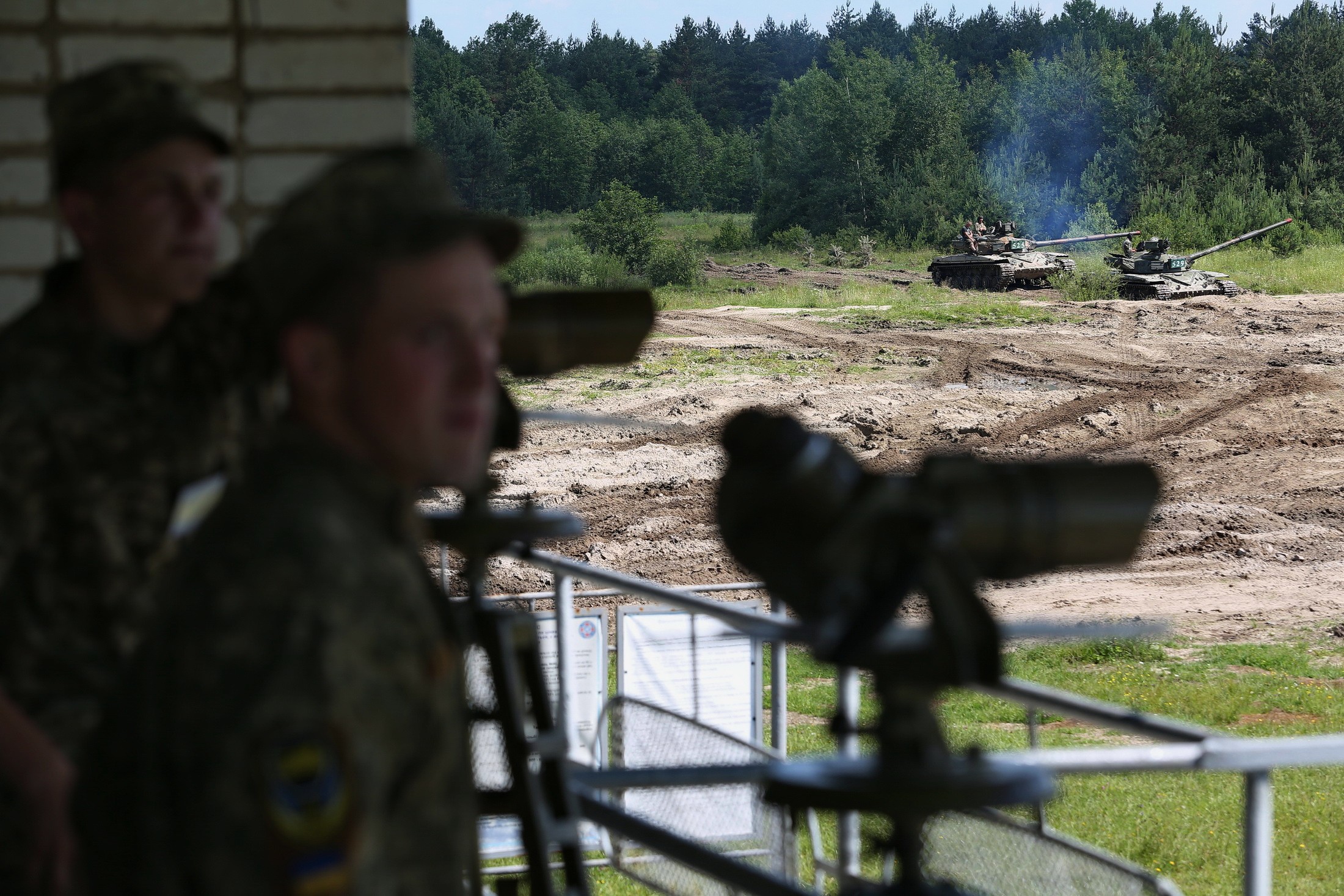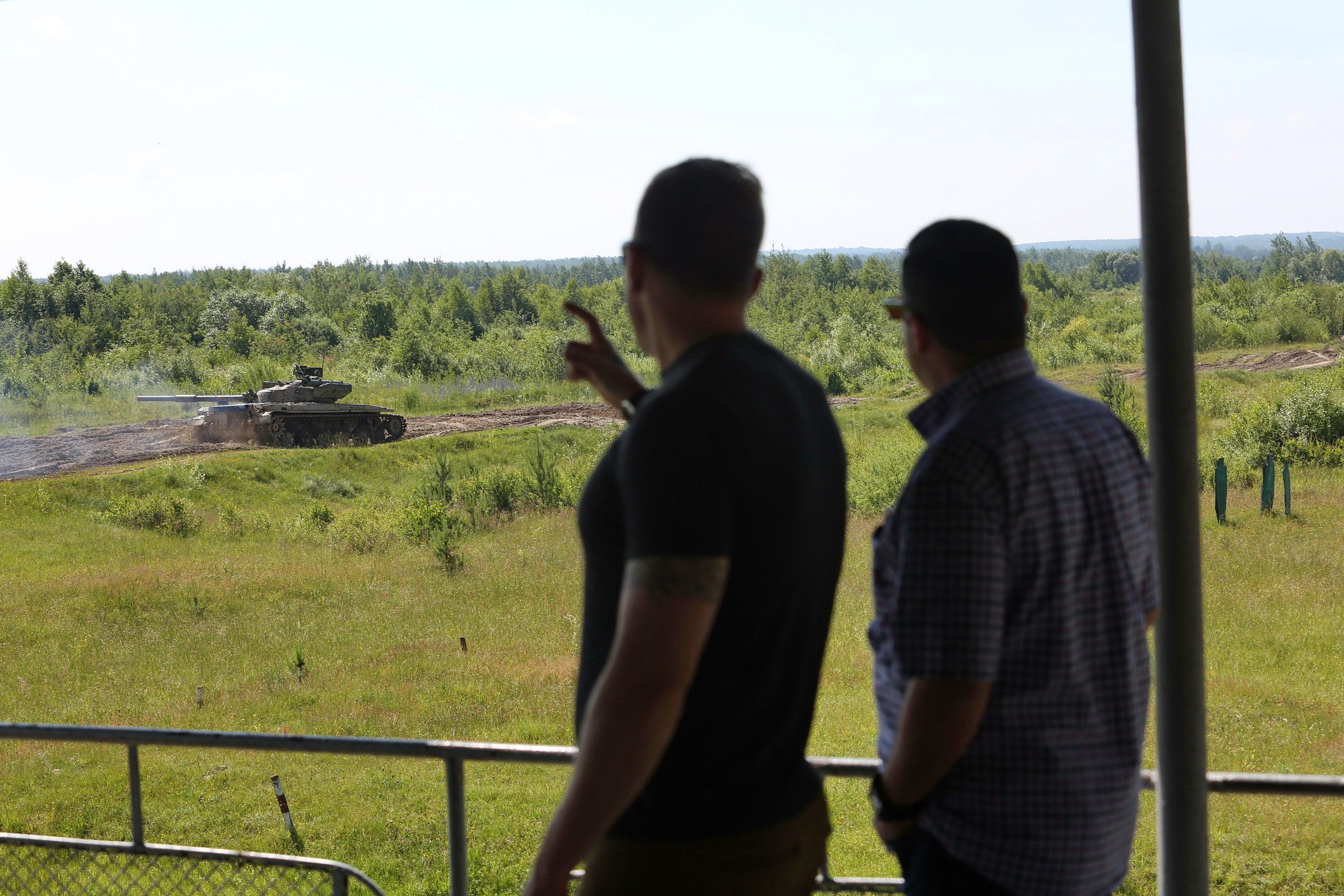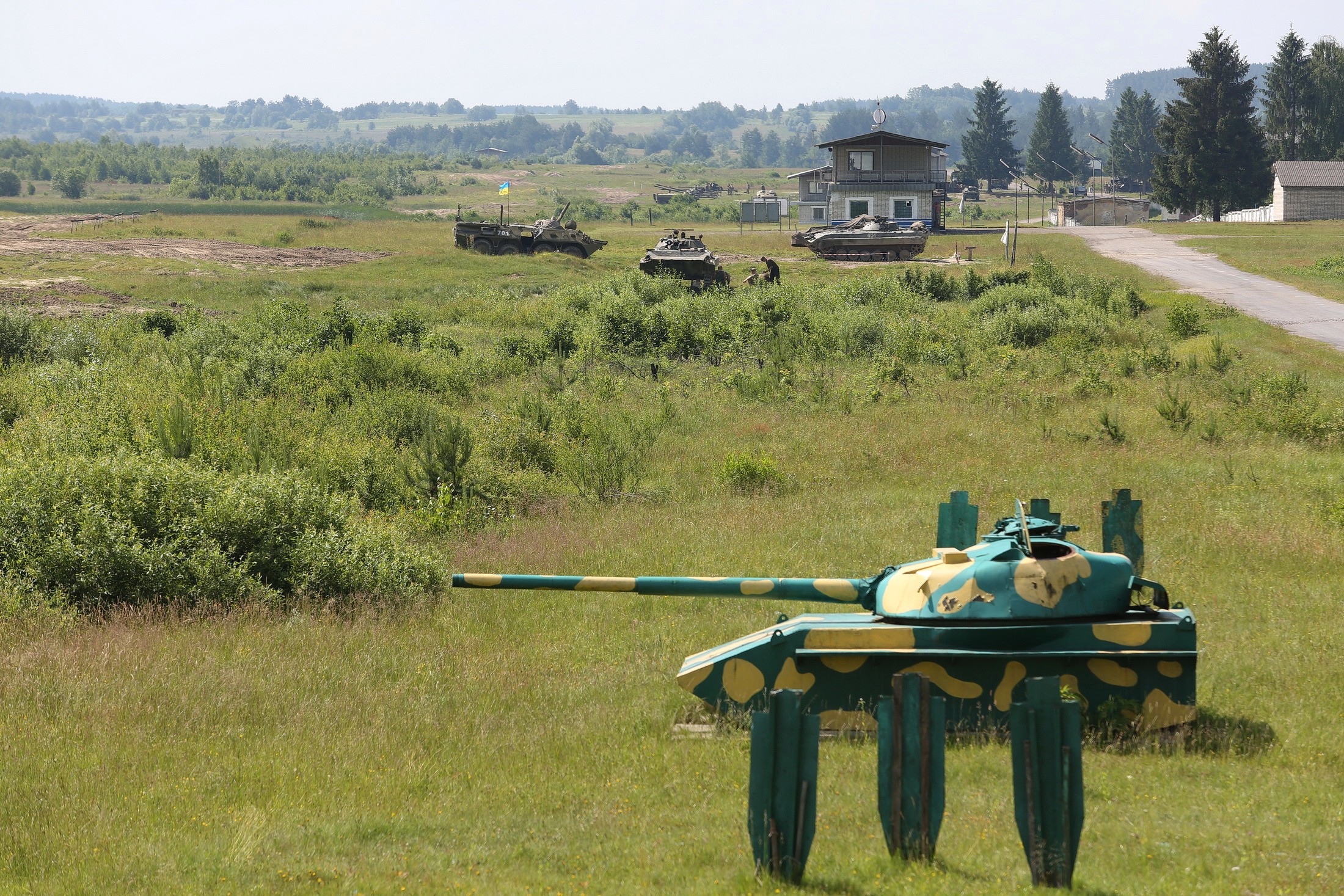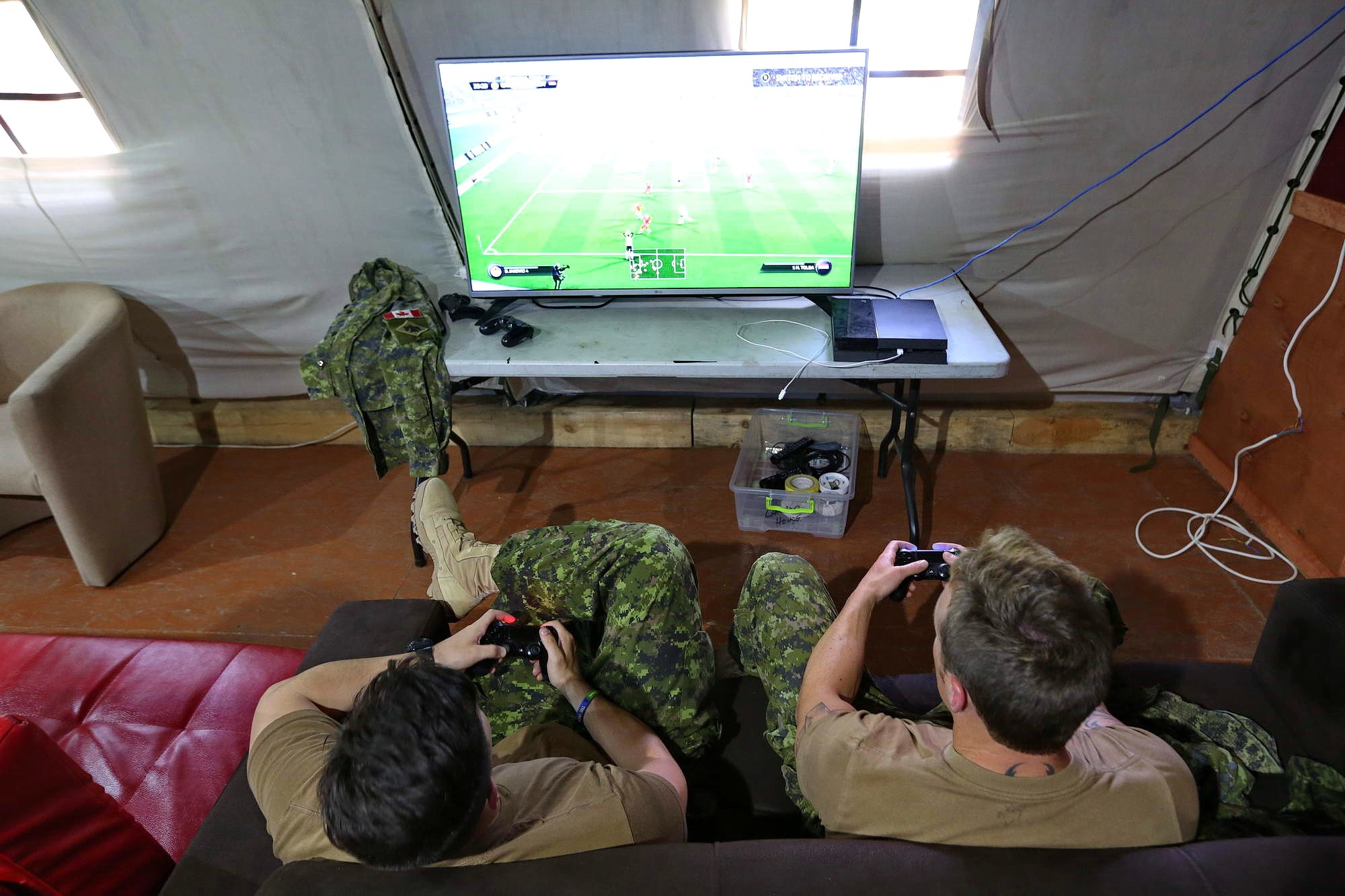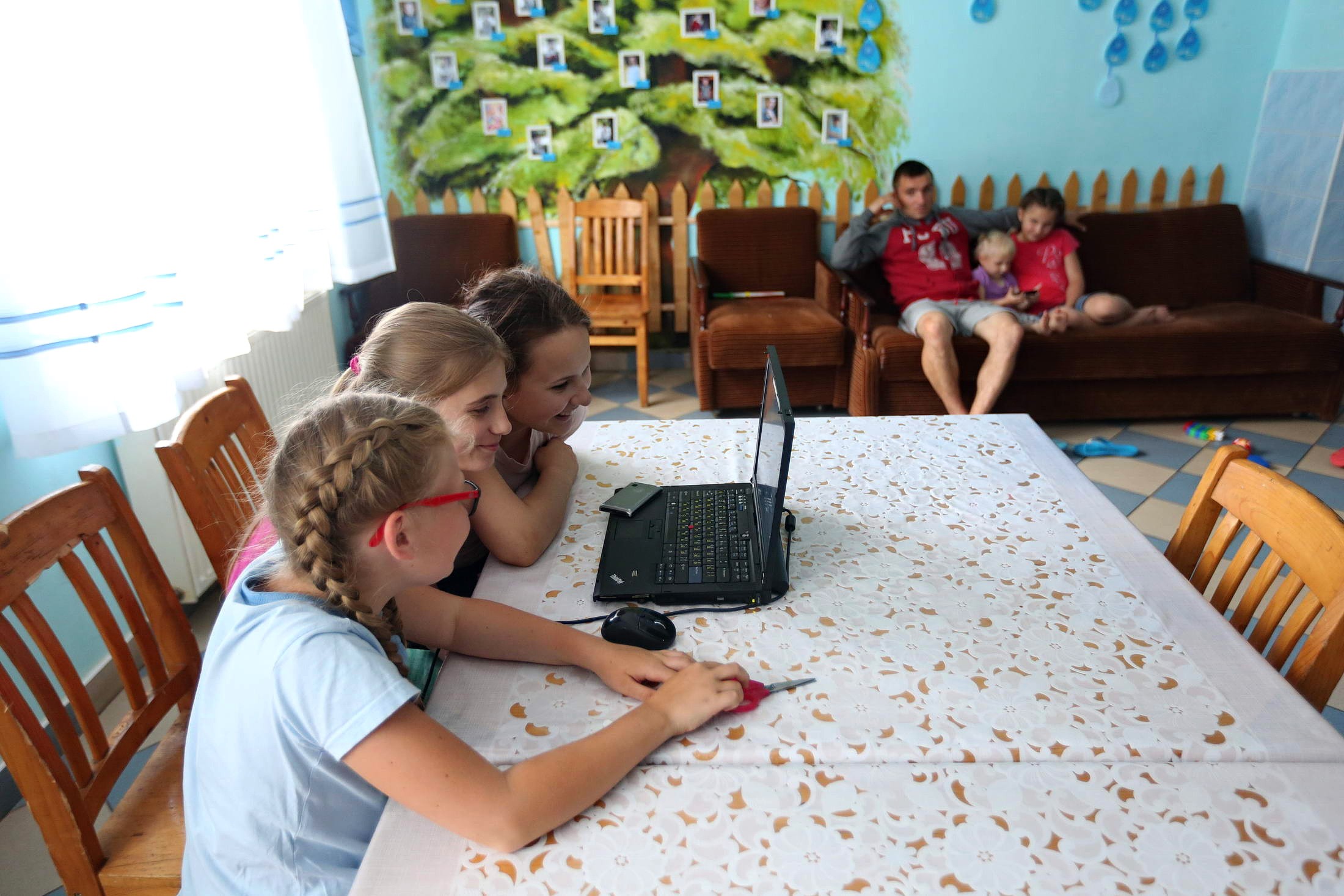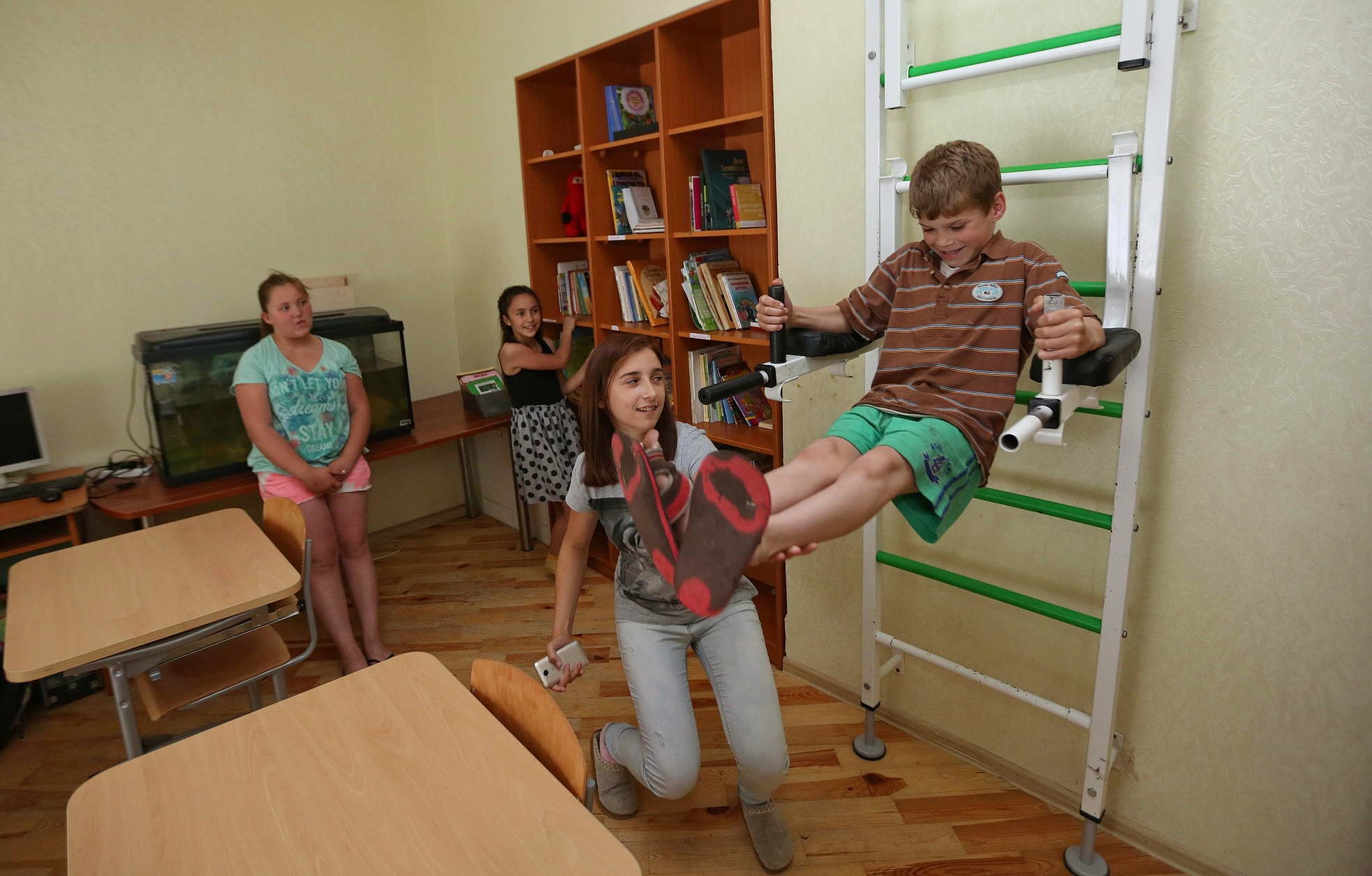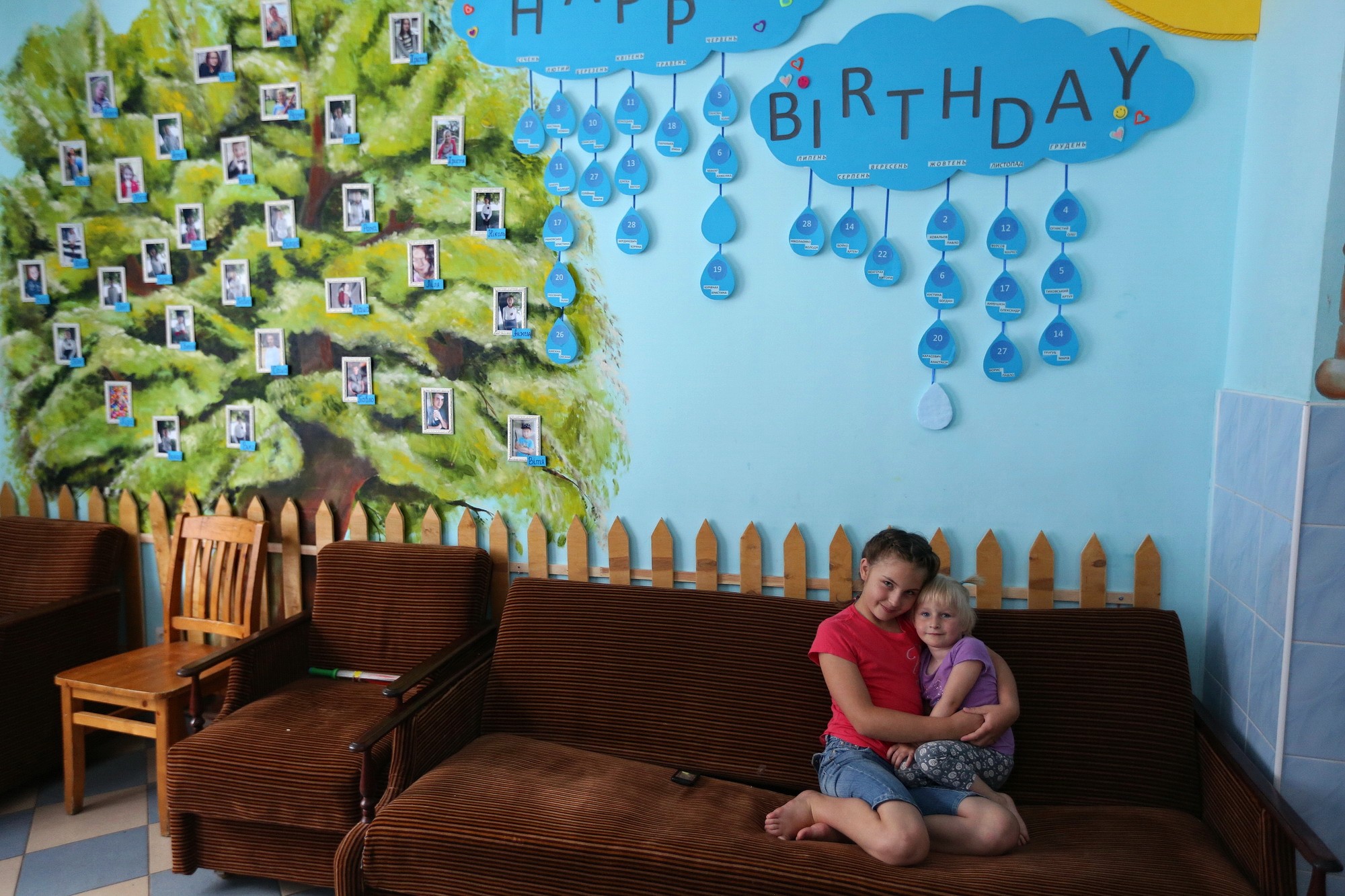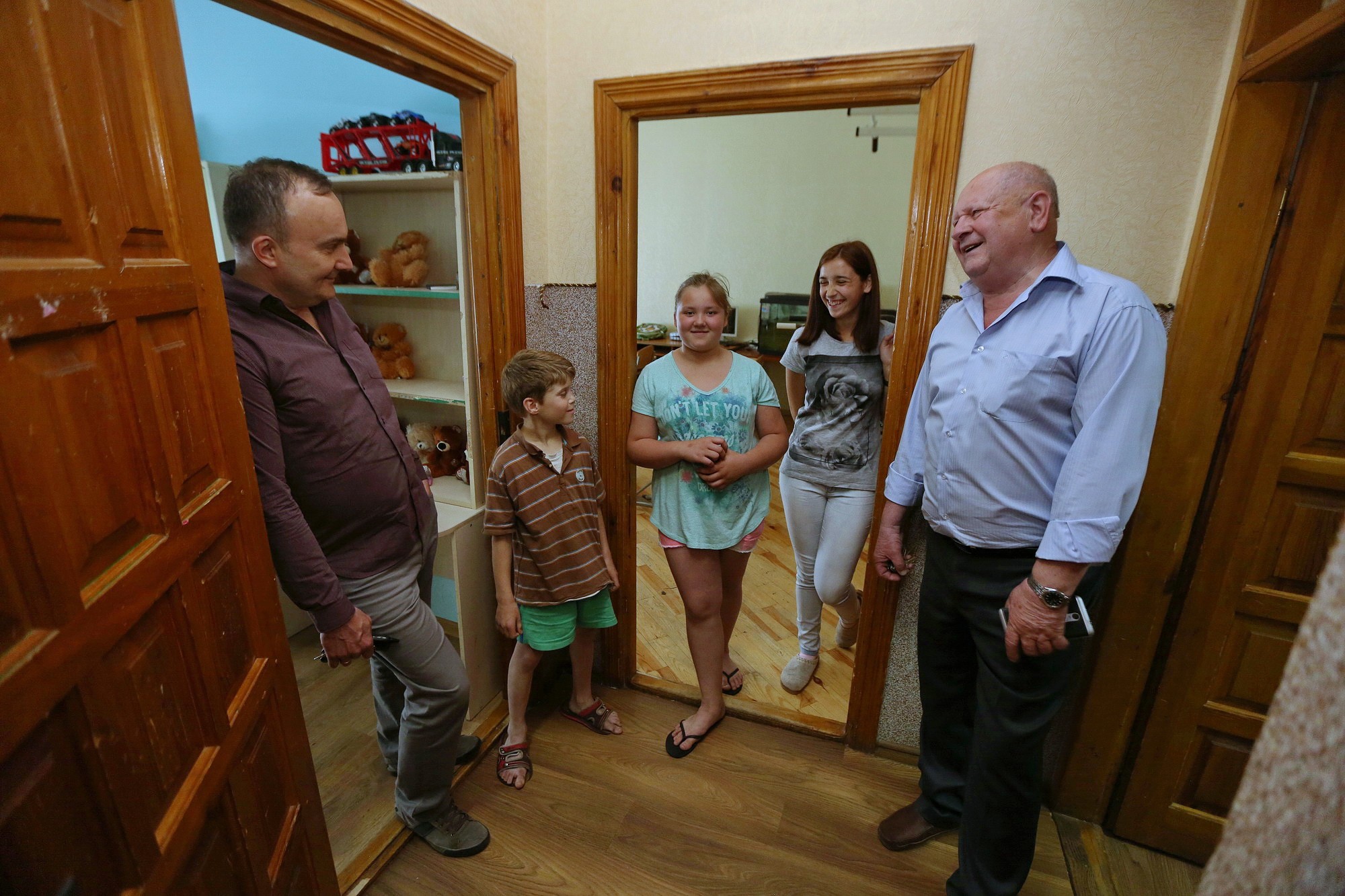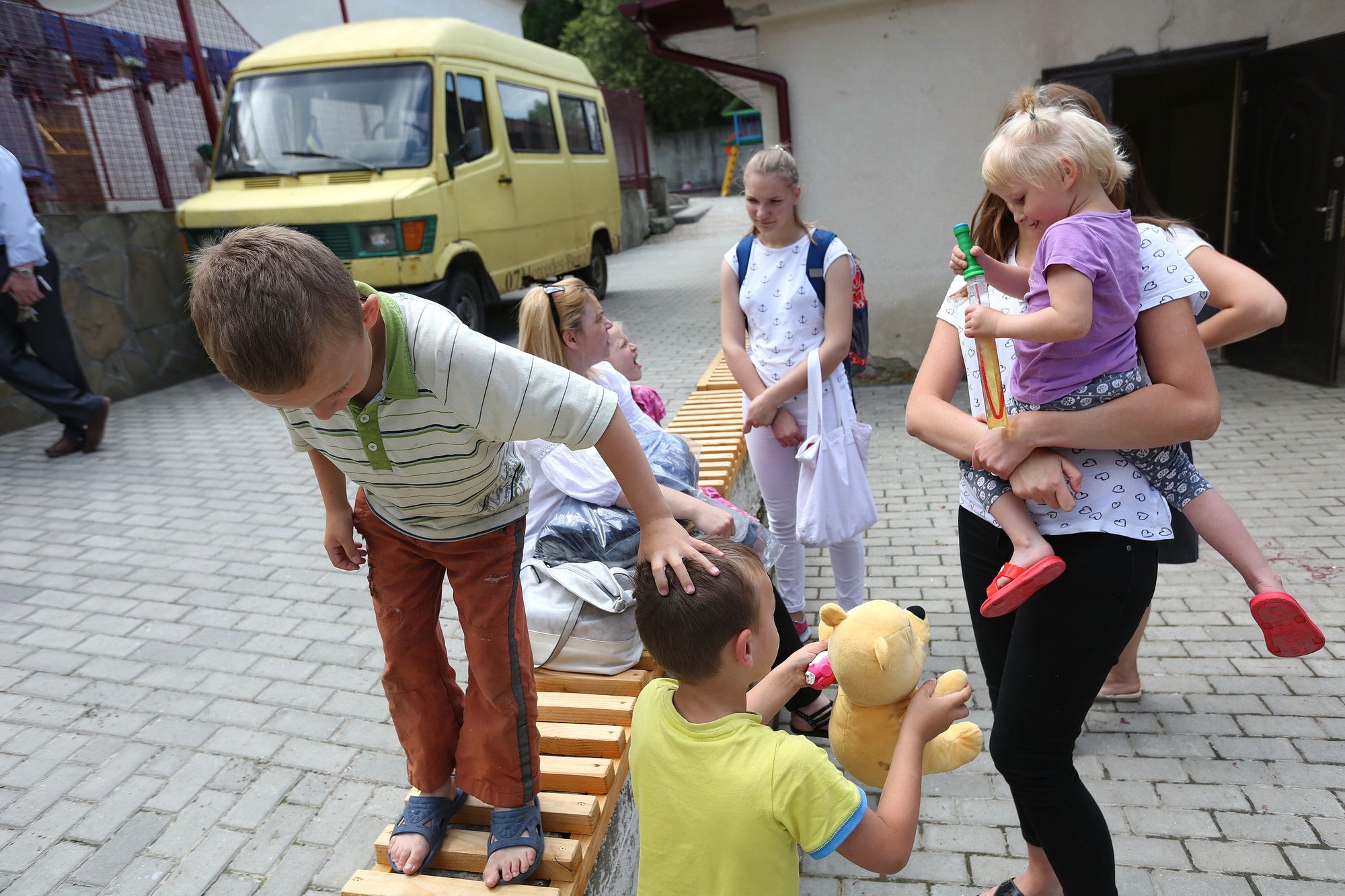STARYCHI, Ukraine — For six months, some 180 Canadian soldiers have found a new home. It is thousands of kilometers away from their native land, at the Yavoryivsky military training ground near the village of Starychi in Lviv Oblast, some 580 kilometers west of Kyiv.
Along with soldiers from the United States, Poland, Lithuania and the United Kingdom, the Canadians are here at the Ukrainian Defense Ministry’s International Center for Peacekeeping and Security to train Ukrainian soldiers under the Canadian military’s UNIFIER program.
The UNIFIER program, which started in September 2015 and is now to be extended until the end of March 2019, is only a part of Canada’s aid to Ukraine, which for three years has been fighting Russia’s war in the Donbas that has killed more than 10,000 people and dismembered the nation.
Over the past few years, Canada has supplied the Ukrainian military with ballistic face shields, night vision goggles, body armor, helmets, sleeping bags and cold weather clothing, equipment worth more than $23.5 million.
Since the summer of 2015, Canadian soldiers have been “knocking down the doors” of their sergeants for a chance to go to Ukraine with the Canadian military’s UNIFIER training mission, Canadian officers say.
As of June, the Canadian military had trained 4,450 Ukrainian soldiers.
Medical training
The 55-day training course run by the Canadian military covers combat first-aid training, marksmanship, individual weapons training, explosive threat recognition and disposal, modernizing logistics, and more. The Canadian soldiers mostly come in six-month rotations, with a 15-day visit back home.
The Canadian training for Ukrainian military focuses on life saving.
“This right here saves lives,” says public affairs officer Michael Wiesenfeld, pointing to a tourniquet in the first-aid training kit that stops arterial bleeding. “The reason we’re working so hard to train is that the consequences are fatal if we don’t do it right.”
Every Ukrainian soldier here gets combat first-aid training, where they learn to treat burns, wounds, and use tourniquets, analgesics and hemostatic devices until professional help is available.
The skills they acquire are then taken back to the war zone.
Canadian chief warrant officer Sergeant Major Rob Clarke says that Canadian soldiers love the training.
“The soldiers are knocking my door down to try and come and do this, and they’re loving this,” he says.
As for the Ukrainians, they say find the training helpful.
Vitaliy Ilyk, captain of the Ukrainian military press service has been on the training ground with Canadians for the past six months. Ilyk says his fellow soldiers are finding the training very helpful.
“Since the soldiers mainly come from the front line, at first this training seems like a game to them… In a way, it is relaxing for them,” Ilyk explains. “But working on their mistakes in a calm manner and analyzing everything is a real breakthrough for the military. It makes the soldiers more skilled in fighting.”
Doctors’ missions
Not only soldiers but also doctors have traveled across the ocean from Canada to save the lives of Ukrainian soldiers.
There have been at least five missions of Canadian doctors to Ukraine, funded by the Canadian government, as well as corporate and private donations from the Ukrainian diaspora community, including from hockey legend Wayne Gretzky and Ottawa Senators hockey team owner Eugene Melnyk.
A group of Canadian surgeons, anesthetists and nurses first came to Ukraine in late 2014 to treat wounded Ukrainian fighters.
In the previous four missions, at least 240 operations were performed on 127 Ukrainian activists and soldiers wounded during the EuroMaidan Revolution and the Donbas war, according to a news release from the Canada Ukraine Foundation or CUF.
Canada has also initiated an international technical assistance project to improve the security of Ukraine’s borders.
On June 13, the Canadian government handed over a modern Calypso digital radiography system to the State Border Service of Ukraine’s Odesa hospital. The system allows for both horizontal and vertical examinations. Ukraine has already obtained assistance worth about Hr 14.3 million from Canada since August 2014 under the project.
Charitable help
The Canadian military is also helping Ukraine via at least three charities.
One, the OVES charity fund, runs a project to obtain prosthetic limbs for veterans of Russia’s war in Ukraine. Two others, the Jerelo and Caritas charities, organize day programs for kids and young adults with autism, and those with physical or mental disabilities.
“We’re guests here, in Ukraine,” says Wiesenfeld. “And if we’re going to be guests, we’re going to be good guests. So if we have the ability to do something good, we’re going to do it.”
In late 2015, Canadian soldiers under the leadership of Chaplain Wayne Sollows, in their spare time were able to help the Grace Orphanage in Lviv, a boarding school in the village of Skole in Lviv Oblast, a children’s hospital in Kryviy Rih, and other causes.
Lyubomyr Zabolotniy, the director of the Grace Orphanage, which is currently home to 31 children, says that the visit by the Canadian military was very encouraging for the kids, who felt that they mattered even to people from outside of Ukraine.
New mandate
Back at the training ground in Lviv Oblast, Clarke explains that the Canadian and Ukrainian militaries are quite different, and it’s impossible to apply a set of rules and guidelines from Canada directly to the Ukrainian army.
But under a new mandate recently developed for the training mission, the Canadian military is able to listen to the needs and suggestions of Ukrainian military officers, and meet those needs within a few weeks.
On a lighter note, Clarke says with a grin, “The vehicles that used to be those of the enemy, that we used to study — now we’re training on them, so that’s a fun fact.”
But the ultimate aim of the training, of course, is deadly serious.
Ilyk says that Russia’s war in Ukraine is a hybrid war, and no one knows exactly how to fight it yet. For now, the war basically consists of the sides maintaining pressure on each other.

